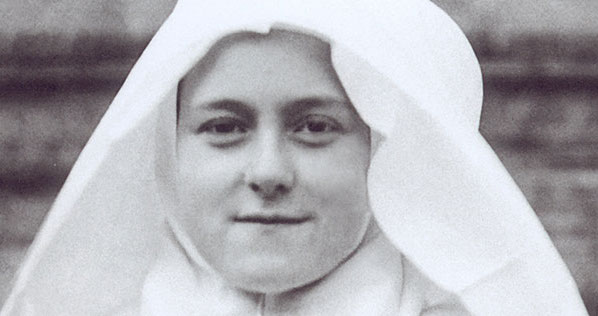
Today we continue our regular series called “Learning from the Saints.” Our guide is expert Bert Ghezzi, a dear friend of mine and the author of numerous books including Voices of the Saints, Saints at Heart, and Discover Christ: Developing a Personal Relationship with Jesus.
His more recent books are The Power of Daily Mass and The Heart of Catholicism. You can learn more about Bert and his work at BertGhezzi.com.
Today, Bert profiles St. Thérèse of Lisieux, the Little Flower who is the patroness of foreign missions, and whose feast day is today.

From obscurity as a young, idealistic Carmelite, Thérèse of Lisieux has emerged as one of the best loved saints. Her simplicity attracts us because she puts holiness within our reach.
Thérèse was the daughter of Louis and Zélie Martin. When she was four years old, her pleasant childhood was interrupted by Zélie’s untimely death. Then Thérèse’s older sister, Pauline, took responsibility for raising her in the faith. In 1882, Pauline entered the Carmelite convent at Lisieux, igniting a desire in Thérèse to do the same.
Thérèse’s fourteenth year was pivotal. Her sister, Mary, joined Pauline at the convent. And at Christmas, the young saint had an experience she described as her “conversion.” Later, in A Story of a Soul, her Autobiography, Thérèse described it as a release from depression and oversensitivity:
“Jesus flooded the darkness of my soul with torrents of light. I got back for good the strength of soul lost when I was four and a half. Love filled my heart, I forgot myself, and henceforth I was happy.”
In spite of Thérèse’s youth, the next year the bishop allowed her to become a Carmelite at Lisieux.
From childhood, Thérèse aspired to become a missionary and a martyr. It soon became clear to her, however, that neither option was open to a cloistered nun. So she sought the Holy Spirit and searched the Scripture for another way to excel:
“We live in an age of inventions. We need no longer climb laboriously up flights of stairs. And I am determined to find an elevator to carry me to Jesus, for I was too small to climb the steep stairs of perfection. So I sought in Holy Scripture some idea of what this lift I wanted would be, and I read, ‘Whoever is a little one, let him come to me’ (See Lk 8:16). I also wanted to know how God would deal with a ‘little one,’ so I searched and found: ‘You shall be carried in her arms and fondled in her lap; as a mother comforts her son…’ (Is 66:12-13; NAB)
“It is your arms, Jesus, which are the elevator to carry me to heaven. So there is no need for me to grow up. In fact: just the opposite: I must become less and less.”
In 1897, Thérèse thought her dream of becoming a missionary was about to come true. The Carmelites at Hanoi in Indo-China had invited her to join them. But on the early morning of Good Friday, she began to hemorrhage from the mouth. She had contracted tuberculosis, which tortured her for several months before it took her life on September 30, 1897.
Thérèse learned to do the loving thing in every situation, which she discovered was the fuel that fired the faith of martyrs and saints. That was the secret of her “little way” of perfection that has captivated our hearts:
“Great deeds are forbidden me. I cannot preach the gospel nor shed my blood—but what does it matter? My brothers toil instead of me and I, a little child keep close by the throne of God and I love for those who fight. Love proves itself by deeds. I will scatter flowers, perfuming the Divine Throne, and I’ll sweetly sing my hymn of love. These flowers are every little sacrifice, every glance and word, and the doing of the least of actions for love.”
Read more from Bert at his website www.BertGhezzi.com, or check out his many books on Amazon.
